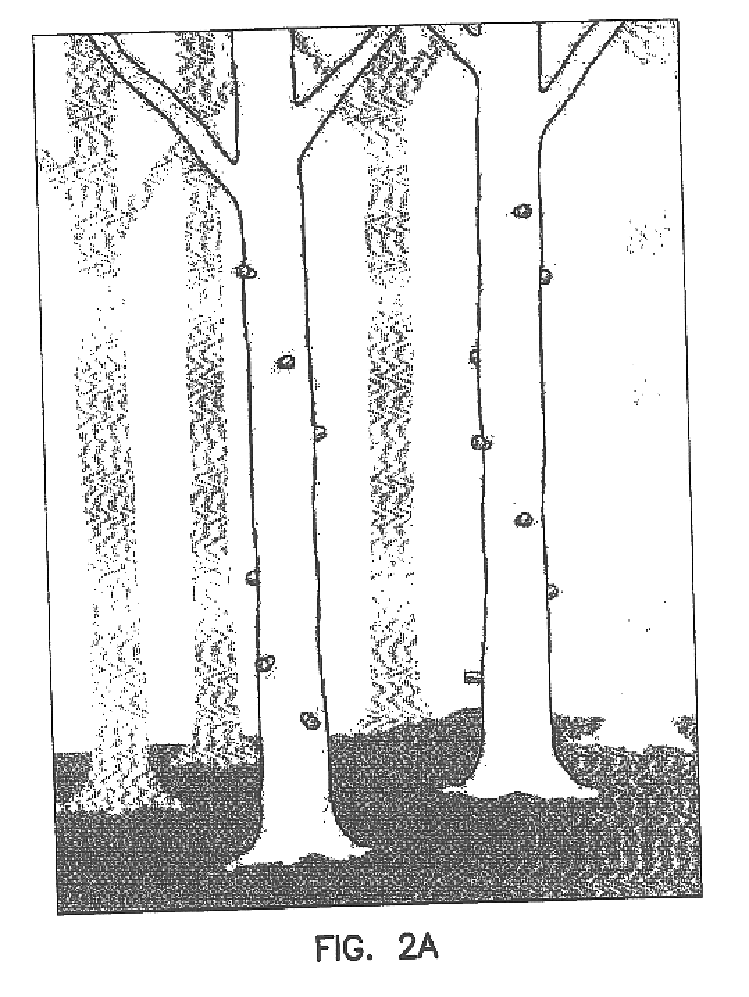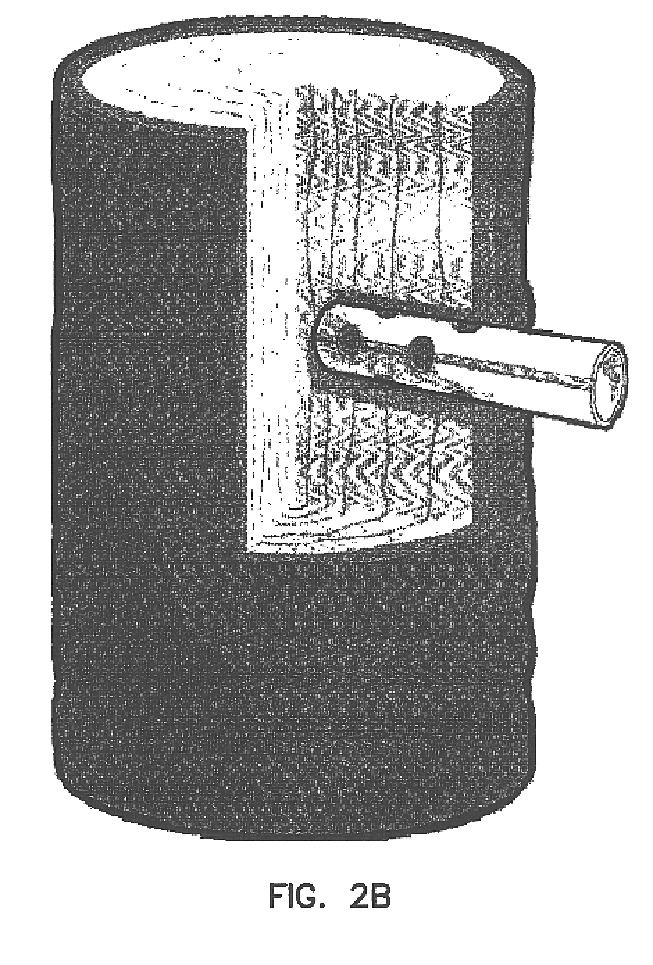Cultivated agarwood
a technology of cultivated agarwood and agarwood, applied in the field of cultivating agarwood, can solve the problem of killing cells locally
- Summary
- Abstract
- Description
- Claims
- Application Information
AI Technical Summary
Benefits of technology
Problems solved by technology
Method used
Image
Examples
example 1
Trees were wounded by making six ax wounds into the main trunk on each tree. Trees harvested after six months were cut and split through the wounded area. The area of discoloration was measured on the exposed longitudinal plane. Resin formation (agarwood) occurred (if it occurred) in a small zone between the wounded, discolored wood and the live unaltered wood. After 6 months, the mean area of discoloration of six ax wounds was 6.1 cm2 ranging from 1.6 to 9.1 cm2 and no distinct area of resin formation was seen. After 21 months, the mean area of six ax wounds was 0.3 cm2 ranging from 0.0 to 1.5 cm2 and no resin was apparent. The results from this study show that wounding trees with an ax and making shallow surface wounds does not produce agarwood.
example 2
Trees were wounded with a ⅝ inch drill to a depth of approximated 5 cm. Six wounds were made in a spiral fashion on the trunk of the tree approximately 20 cm apart. One of the six wounds served as a control and the other 5 wounds were filled with agarwood (approximately 0.5 g per wound) from a tree in the forest with naturally produced agarwood. This tree had been cut by poachers but some parts of the tree remained and some fresh agarwood was obtained from it. Small sections of the agarwood were cut and put into the drill wounds. After 6 and 18 months trees were harvested and evaluated with the following results.
WoundTreatmentArea of discolorationAfter 6 months1Control11.72agarwood27.63agarwood22.14agarwood15.65agarwood12.66agarwood16.0After 18 months1Control18.42agarwood16.93agarwood18.84agarwood19.15agarwood15.16agarwood17.6
The amount of discoloration was somewhat greater than when ax wounds were used and a very small region of what appeared to be resin was found at the interface ...
example 3
Trees were wounded with a ⅝ inch drill to a depth of approximated 5 cm. Six wounds were made in a spiral fashion on the trunk of the tree approximately 20 cm apart. One of the six wounds served as a control and the other 5 wounds were inoculated with pure cultures of fungi isolated from fresh agarwood obtained from natural forests in Vietnam. Five different fungi, representing different species of Ascomyota and Deuteromycota, were used. The genus and species was not determined but culture morphology indicated each fungus represented different genera. Only cultures proving to be successful for stimulating agarwood were to be identified to species after field data was obtained. Fungi were grown on sterile oats supplemented with malt extract broth for added nutrients. Cultures were grown for 3 weeks on the oat / malt extract substrate. Drill wounds inoculated with the fungi were filled with the fungus / oat inoculum. After 6, 18 and 21 months the trees were harvested and the following resu...
PUM
| Property | Measurement | Unit |
|---|---|---|
| depth | aaaaa | aaaaa |
| depth | aaaaa | aaaaa |
| diameter | aaaaa | aaaaa |
Abstract
Description
Claims
Application Information
 Login to View More
Login to View More - R&D
- Intellectual Property
- Life Sciences
- Materials
- Tech Scout
- Unparalleled Data Quality
- Higher Quality Content
- 60% Fewer Hallucinations
Browse by: Latest US Patents, China's latest patents, Technical Efficacy Thesaurus, Application Domain, Technology Topic, Popular Technical Reports.
© 2025 PatSnap. All rights reserved.Legal|Privacy policy|Modern Slavery Act Transparency Statement|Sitemap|About US| Contact US: help@patsnap.com



